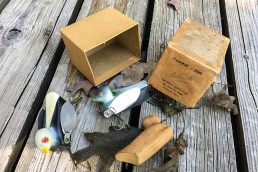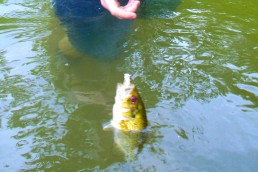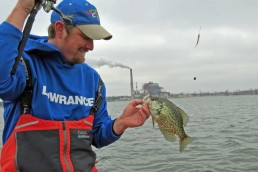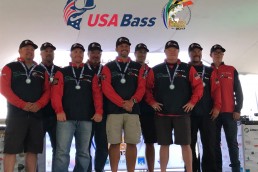The Byler ‘Muskie-Duc’
SHARE THIS POST
William M. James of Chicago obtained patent number 2,665,514 on January 12, 1954 for a wooden duck lure. He then assigned the manufacturing rights to the Byler Corporation, located at 602 Green Bay Road, in Kenilworth, Ill. The name they gave the lure was the “Muskie-Duc.” It came in a tan cardboard box with an instruction sheet. 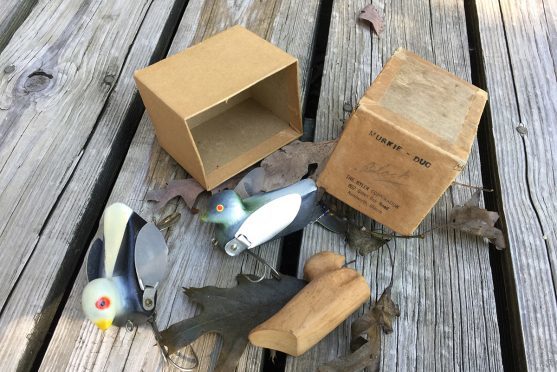
The four colors and the combination options it came in were all beautiful: green and yellow, red with silver and black-painted oval eyes, black and white with red eyes and a yellow beak, orange with red trim and bluish-black and white with round red-painted eyes. These 3 1/2-inch-long lures also had white wavy lines painted on their bellies.
Are you enjoying this post?
You can be among the first to get the latest info on where to go, what to use and how to use it!
Wings on the Muskie-Duc were aluminum-jointed and designed to flap, giving an action from side to side, like a Heddon Crazy Crawler. In addition, the two “legs” were with Hildebrandt dual spinners to simulate paddling feet, completing the bait.
These are very hard to find now. Years ago, in the “toy” section of some antique stores, there were a few of the unpainted bodies being sold for 25 cents each as bathtub toys. Wish I had bought them all, but hindsight is 20/20.
MWO
SHARE THIS POST
Did you enjoy this post?
You can be among the first to get the latest info on where to go, what to use and how to use it!
Dan Basore
Dan Basore is a fishing historian and steward of the history of the sport. In his efforts to preserve fishing history, he is always on the lookout for information about early lure makers, old lures, pre-level wind reels, manufacturer catalogs, tournament casting items and the like. If you possess information or materials of this kind, please contact him at 630-393-3474 or by email at ollures@aol.com.
